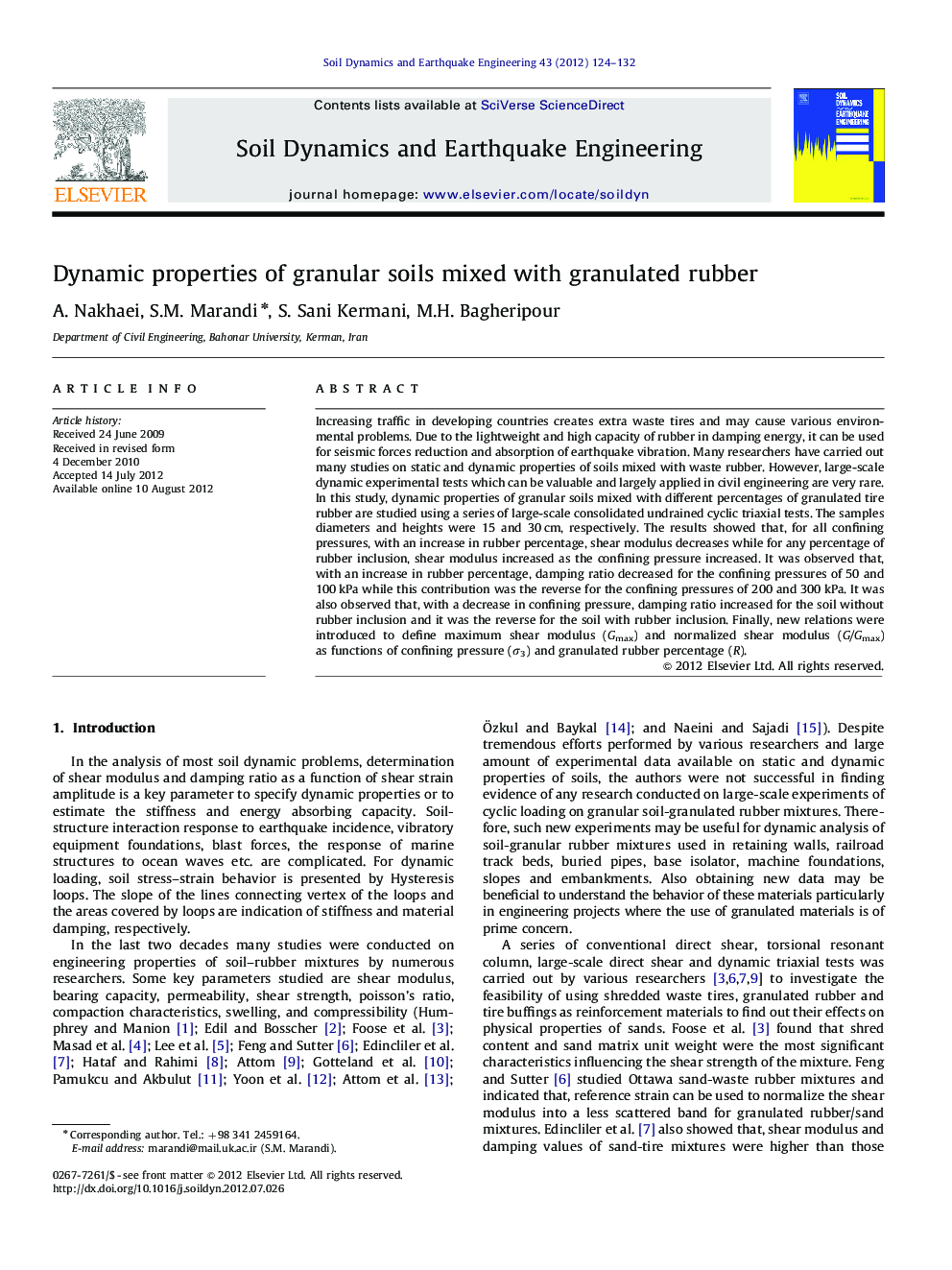| Article ID | Journal | Published Year | Pages | File Type |
|---|---|---|---|---|
| 304420 | Soil Dynamics and Earthquake Engineering | 2012 | 9 Pages |
Increasing traffic in developing countries creates extra waste tires and may cause various environmental problems. Due to the lightweight and high capacity of rubber in damping energy, it can be used for seismic forces reduction and absorption of earthquake vibration. Many researchers have carried out many studies on static and dynamic properties of soils mixed with waste rubber. However, large-scale dynamic experimental tests which can be valuable and largely applied in civil engineering are very rare. In this study, dynamic properties of granular soils mixed with different percentages of granulated tire rubber are studied using a series of large-scale consolidated undrained cyclic triaxial tests. The samples diameters and heights were 15 and 30 cm, respectively. The results showed that, for all confining pressures, with an increase in rubber percentage, shear modulus decreases while for any percentage of rubber inclusion, shear modulus increased as the confining pressure increased. It was observed that, with an increase in rubber percentage, damping ratio decreased for the confining pressures of 50 and 100 kPa while this contribution was the reverse for the confining pressures of 200 and 300 kPa. It was also observed that, with a decrease in confining pressure, damping ratio increased for the soil without rubber inclusion and it was the reverse for the soil with rubber inclusion. Finally, new relations were introduced to define maximum shear modulus (Gmax) and normalized shear modulus (G/Gmax) as functions of confining pressure (σ3) and granulated rubber percentage (R).
► Shear modulus and damping ratio decreased with an increase in rubber inclusion. ► Shear modulus increased with an increase in the confining pressure for any percentage of rubber. ► Two models introduced to predict Gmax and (G/Gmax) versus (γ). ► For a given percentage of rubber, with an increase in confining pressure, the values of G/Gmax increased. ► At a given confining pressure, the values of G/Gmax increased with an increase in rubber inclusion percentage.
